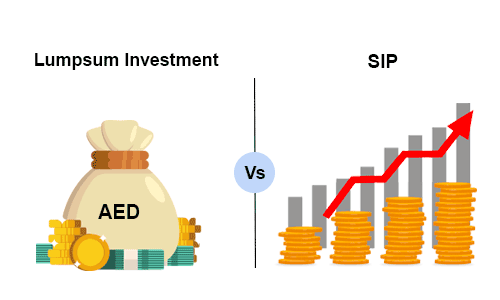What are the Various Types of Mutual Funds?
A mutual fund is a financial instrument that creates a pool of diversified commodities using the funds collected from the investors. These funds are invested in equity, money market tools, bonds, and several other assets. A mutual fund is usually managed by a professional money manager, who allocates the funds and works on generating capital gains or income for the investors’ funds.
A mutual fund is structured and sustained while keeping the investment objectives (as stated in the prospectus) in mind. Several types of mutual funds can be found in the market based on the class of assets, investment goals, risk capacity, and structure. Let’s explore these different types of mutual funds in this article.
Table of Content
Different Types of Mutual Funds
You can invest your money in different types of funds which can be broadly categorised into five divisions based on –
- Asset Class
- Investment Class
- Risk
- Structure
- Specialised Mutual Funds
These categories are discussed in detail below.
Based on Asset Class
On the basis of the asset type, the different types of mutual funds are –
- Equity Funds - This is the most sought-after type of mutual fund scheme. With this mutual fund, an investor can easily invest in the stock market as even though it is a high-risk venture, this scheme has the potential to offer a high return on investment (ROI) in the long run. This type of mutual fund is suitable for investors who are at their prime in terms of earning. They can build a portfolio that provides them with high returns. Generally, you can diversify your equity fund to invest in a range of sectors to disperse the risk.
- Debt Funds- These funds involve fixed-income instruments like bonds, treasury bills, and securities. Under this type of mutual fund scheme, the investor invests in different types of fixed-income tools like liquid funds, gilt funds, fixed maturity funds, short-term plans, monthly income plans, and long-term bonds. These funds are ideal for passive investors looking for safe investments, as they have a fixed rate of interest and maturity date and offer regular income to investors with minimal risk.
- Hybrid or Balanced Funds - Hybrid or balanced funds represent an optimum combination of bonds and stocks. This type of mutual fund bridges the gap between equity and debt funds, although the proportion of each type of fund may vary or could be fixed. This fund essentially takes the best of the two mutual funds types by distributing the money in stocks and bonds. These funds are appropriate for investors who have a larger risk appetite for debt and returns benefit from sticking to a lower ROI but steady income scheme.
- Money Market Funds - Money market funds are simply short-term debt tools that offer considerable returns on investment within a short time span. These types of mutual funds are a part of the capital market or cash market, which is usually operated by the government in collaboration with banks and other financial organisations and corporations. The securities issued here include bonds, treasury bills, certificates of deposits, and dated securities. The fund manager invests the money and distributes the dividends regularly in return. You can opt for a short-term plan (of up to 13 months) to minimise the investment risk on such funds.
Based on Investment Goals
On the basis of investment goals, the following types of mutual fund schemes can be found in the UAE –
- Income Funds - Income funds belong to the debt mutual funds category. Here, the money is invested into a combination of bonds, securities, and certificates of deposits. Steered by professional fund managers, the portfolio is organised keeping in mind the rate fluctuations. Consequently, the rate fluctuation does not hamper the creditworthiness of the portfolio. These funds are suitable for risk-averse investors who can invest the money for 2 to 3 years. Keep in mind that the investors here usually earn better returns than regular deposits.
- Growth Funds - In this type of mutual fund, a considerable portion of the investors’ money is allocated to shares and growth sectors. This fund type is appropriate for investors like millennials who have sizeable idle money that can be allocated to riskier plans for potentially high returns.
- Liquid Funds -Similar to income funds, liquid funds, too, are part of debt funds. The money from the investor is invested in debt tools and the money market for up to 91 days. What distinguishes liquid funds from other debt funds is the calculation of the net asset value (NAV). Net Asset Value refers to the share market value of a particular fund. It is the price at which investors purchase fund shares from a company and sell them (the redemption price) to another fund company. With liquid funds, the NAV is computed for 365 days (inclusive of Sundays). In the case of other debt funds, on the other hand, only business days are considered while computing the NAV.
- Aggressive Growth Funds - Aggressive growth funds are suitable for individuals seeking higher monetary gains while also having a similarly high risk appetite. Easily affected by market volatility, one can decide on the type of fund one wants to invest in based on the beta (the instrument to check the fund’s movement in comparison with the market).
- Capital Protection Funds - If the protection of the principal amount is high on your priority, capital protection funds make for a suitable option here. While the returns are relatively lower, your capital remains intact with these funds. The fund manager invests a significant part of the money in bonds or certificates of deposits, with the remainder of the amount being invested in equity. Even though the chances of incurring loss are low here, it is still recommended to keep your money invested for at least three years to gain returns and safeguard it from a decrease in value.
- Fixed Maturity Funds - Most investors tend to invest in mutual funds towards the end of the financial year. One of the most sought-after mutual fund schemes in such cases is the fixed maturity fund, where the fund manager primarily invests in bonds, money market, and securities. This type of mutual fund scheme is close-ended and performs on a fixed maturity period which can range from one month to 5 years. The fund manager here ensures that the investment reaps accumulated interest at the time of maturity.
- Pension Funds - Pension funds help individuals gather sufficient funds for dealing with scenarios like emergency medical situations, children’s wedding, and more near their retirement. To invest in a pension fund, you can set aside a portion of your income in a pension plan to let it accumulate in the long run to secure you and your family post your retirement.
Based on Risk
Based on your risk appetite, the types of mutual funds can be divided into –
- Low Risk - Investors are generally hesitant to put money into riskier funds, as any case of currency depreciation or an unanticipated national crisis can quickly obliterate their investment. In such cases, one can consider investing in one or a mixture of liquid, short-term, or arbitrage funds. With low risk funds, the returns could range from 6 to 8%, although investors are allowed to make modifications when valuations stabilise.
- Medium Risk - This type of mutual fund, as the name suggests, carries a medium level of risk for the investor. They typically offer higher returns than the low-risk ones, making them suitable for investors who are ready to take a certain degree of risk. These funds can be invested in order to accumulate money over a longer period.
- High Risk - High-risk mutual funds require active fund management and are ideal for investors who have no risk aversion and wish to earn a large return in terms of interest and dividends. Since performance reviews are subject to market volatility, they must be conducted on a regular basis. Although the majority of high-risk funds often offer up to 20% returns, you can anticipate 15% returns.
Based on Structure
Mutual funds can also be divided as per several characteristics such as risk appetite, classes of assets, and more. The structural division into open-ended, close-ended, and interval funds is rather broad, and the distinction is principally made by the ability to buy and sell single mutual fund units.
As per the structure, the following mutual fund types exist –
- Open-ended Funds - There are no specified restrictions on open-ended funds with respect to the time limit or a cap on the quantity of units allowed to be traded. With these funds, investors can exchange funds at their convenience and exit when required at the current NAV (Net Asset Value). While the unit capital fluctuates constantly with fresh entrants and exits, keep in mind that an open-ended fund can also choose not to continue accepting new investors.
- Closed-ended Funds - With the close-ended funds, the unit capital to be invested is pre-determined, meaning that the fund company is not allowed to sell more units than the pre-agreed number. Some funds also have a New Fund Offer (NFO) period, during which there is a cut-off date for purchasing units. NFOs have fund managers who are flexible with any fund size and a predetermined maturity period. In order to allow investors to exit the schemes, the market has stipulated that they be given the choice to either repurchase the choice or list the assets on stock markets.
- Interval Funds - Both open-ended and closed-ended mutual funds can be found in interval funds, which are closed the remainder of the time and only available for purchase or redeeming during predetermined intervals (as specified by the fund house). A minimum of two years have to pass with these funds before any trades are allowed. Investors wishing to save a lump sum of money for a short-term financial goal, say within the next three to twelve months, should consider these funds.
Specialised Mutual Funds
The specialised funds are further divided into the following types of mutual funds –
- Sector Funds - Sector funds are theme-based mutual funds that facilitate investment only in one particular sector. The potential risk is higher for these funds as they only invest in particular industries with a small number of stocks. For this reason, investors are encouraged to follow sector-specific trends. Sector funds offer excellent returns, with some industries like banking, IT, pharma, and more having experienced rapid and steady growth in recent years and expected to continue doing so in the years ahead.
- Index Funds - Index funds invest money in a specific index and are suitable for passive investors. Unlike most other funds mentioned, these funds are not managed by a fund manager. An index fund simply finds stocks and their related market index ratios, and invests money in equities with similar market ratios. Index funds allow individuals to play it safe by imitating the index performance even if being unable to outperform the market.
- Funds of Funds - In this type of mutual funds scheme, the fund manager invests your money in other mutual funds and the return on investment is based on the performance of the target fund. Also referred to as multi-manager funds, funds of funds are believed to be safer than other types of mutual funds. This is so because the investors invest in funds that have other funds under them, which helps in adjusting the risk that any one fund has. Moreover, when you invest in a fund that further invests in multiple funds, you can easily achieve portfolio diversification while keeping the investment cost low.
- Exchange Traded Funds (ETFs) - Exchange Traded Funds, although not mutual funds per se, have their employment strategy consisting of mutual funds. ETFs are primarily investment trusts that are dealt with in the stock exchange market and offer extra benefits of equity. The ETFs can be bought and sold the entire day and on a short margin as well. However, these types of funds have lower fees compared to other mutual funds. Several ETFs also seek advantage from the active options market where the investors can leverage their positions.
- Global Funds - In this type of mutual fund scheme, the money is invested in both domestic funds as well as global funds. These mutual funds are diverse and universal in their approach and are suitable for investors with a larger risk appetite. It is so because each country has different policies for investing in mutual funds – the market and the currency may vary too. Nevertheless, these types of mutual funds can offer a break against inflation, with the returns on investment also being comparatively high (along with high risk).
- International Funds - These funds are usually preferred by investors trying to diversify their investments in other nations. This type of mutual fund offers good returns and employs either a hybrid, feeder, or theme-based allocation approach. Under a hybrid approach, 60% of the money is invested in the domestic stock market and the remainder is invested in foreign funds. In the feeder approach, on the other hand, local funds are bought and invested in foreign equities.
- Real Estate Funds - Real estate funds are alternatives for investors planning to invest indirectly in the stakes of established real estate companies rather than in a particular project. This is a long-term investment that has minimal risk and legal obligations to fulfil, especially when you decide on purchasing a property and providing liquidity to some extent.
- Commodity-focused Stock Funds - These types of mutual funds are suitable for investors who have a large risk appetite and plan to diversify their investment portfolio. These funds offer the investors an opportunity to trade in multiple and diverse trades, although the returns may not be regular and are usually based on how the commodity performs. One of the most sought-after commodities with respect to these funds is gold.
- Gilt Funds - In these types of mutual funds, your money is invested in government securities for the long run. As the investment is made in government securities, these funds are suitable for those who have a low-risk appetite.
How to Choose the Appropriate Type of Mutual Fund?
With so many mutual funds options to choose from, picking the right kind of fund can be a challenging task. To select an appropriate type of mutual fund, it is crucial to first comprehend your needs and analyse your goal – is it wealth generation at a sift, moderate or slow pace, or something else? Once you have figured out your requirements, analyse your risk appetite. Keep in mind that you usually get higher returns on investments with high risk potential – both the returns and the downside are to be considered.
As mutual funds have a factor of market risk, it is necessary to need the policy documents thoroughly before making any investment.
FAQ's
Q1. What are the main documents required to invest in mutual funds in UAE?
Ans: The following documents are to be provided to invest in mutual funds –
- Prospectus and Key Investor Information Document (KIID)
- Details about the selected legal entity for the fund
- Applicant’s legal responsibilities presentation and the fund’s internal processes
- Main statutory document (in Arabic)
- A filled-in application form for issuing the licence
Q2. Are mutual funds safe investment option?
Ans: While mutual funds are less risky compared to direct stock investments, they too involve a certain degree of risk like all investment options as the money is invested in equity, bonds, and other investment options. Moreover, the money invested in such funds is not federally insured. For this reason, it is advisable to understand the key aspects of investment and follow the diversification principle to minimise risk.
Q3. Can you sell mutual fund shares at any time?
Ans: Since mutual funds are liquid assets, they can be sold and purchased anytime. However, before trading in them, it is recommended to read the policy document for exchange fees or redemption fees.
Q4. What types of mutual funds are a safe investment and offer fixed returns?
Ans: Debt funds are suitable mutual funds for people looking for safe investments and fixed returns at the same time. The money is invested in debt instruments like government bonds, debentures, and other fixed-income assets.

More From Investment
- Recents Articles
- Popular Articles













.jpg)











.jpg)
.jpg)









